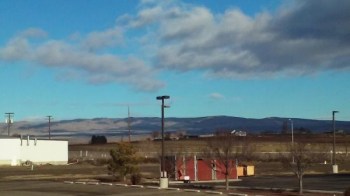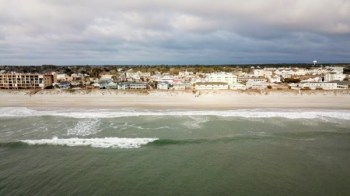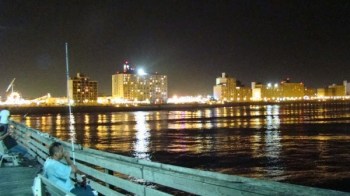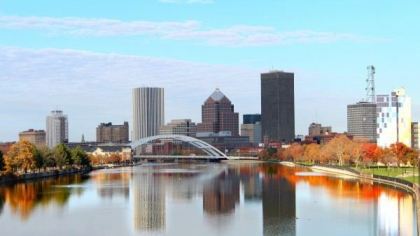
Current water temperature on the United States coast. Forecast of changes in water temperature. Historical data.
Water temperature in United States today
Most popular locations in United States over the past week
Conditions of sea water on beaches in United States
Now in the beaches in United States, the water temperature has different values. There are very cold locations, there are cool places, and there are resorts with warm and comfortable water.
The water temperature in United States has increased both over the past 10 days and over a month.

Today the warmest water in United States is recorded in Sunny Isles. Its value in this location is 79°F. And the coldest one is in Nome, its value 27°F.
The trend can be seen on the graph. It shows the change in average sea surface temperature over the past two months.
For the two most popular locations for swimming in United States, the graphs of changes in the average water temperature throughout the year are as follows:
We process, analyze and store data for every beach and city in United States. Below is a table with current weather data and trends in some places of the country.
| City | Water | Air | ||
| Saint Pete Beach | 77°F |   | 67°F |  |
| Hilton Head Island | 69°F |   | 54°F |  |
| Fort Myers Beach | 77°F |   | 69°F |  |
| Tampa Bay | 77°F |   | 67°F |  |
| Baltimore | 54°F |   | 57°F |  |
| Destin | 72°F |   | 64°F |  |
| San Diego | 60°F |   | 59°F |  |
| Los Angeles | 59°F |   | 57°F |  |
| Clearwater | 75°F |   | 67°F |  |
| Sarasota | 76°F |   | 62°F |  |
| Key Largo | 77°F |   | 75°F |  |
| Miami Beach | 77°F |   | 71°F |  |
| Gulf Shores | 73°F |   | 68°F |  |
| Key West | 78°F |   | 75°F |  |
| Emerald Isle | 64°F |   | 60°F |  |
Climate in United States

The USA is in North America. The country is washed by six seas, such as the Chukchi Sea, the Bering Sea, the Atlantic Ocean, the Gulf of Mexico, the Pacific Ocean, and the Selish Sea. We also monitor water temperatures in large lakes in the USA. The USA is a large resort country and has a long coastline. To determine the temperature of the water in it, we track 788 settlements and resorts.
In the vast territory of the United States, you can find almost all types of climate, from the Arctic and subarctic in Alaska to the tropical in the Hawaiian Islands, California and Florida. In the main part of the country, the climate is temperate continental, humid in the east and dry in the west. On a narrow strip of the Pacific coast, marine temperate (in the north) and Mediterranean (in the south) climate types are traced. The general temperature background is fairly uniform. In summer, the temperature in most areas ranges from + 22°C to + 28°C, while the difference between the northern and southern states is relatively small. Winter in most of the country is quite mild - the average January temperature ranges from -2°C in the north to + 8°C in the south. However, significant fluctuations in temperature are frequent due to the free penetration of air masses both from the Arctic region and from tropical latitudes (the US mountain systems located in the meridional direction act as a kind of “pipe» along which cyclones and anticyclones move from north to south or vice versa almost without obstacles). In mountainous areas it is always cooler than in the adjacent plains - in summer by 4-8 degrees, in winter - by 7-12. At the same time, in the oceanic regions it is always warmer in winter and cooler in summer than in the center of the country (the eastern coast of the country, heated by the warm Gulf Stream, has almost 5–7 degrees higher temperature than the central and western regions). Depending on the nature of the mountain systems, the weather stability also noticeably changes - in the low Appalachian mountains the climate differs little from the plains of the east of the country and is quite constant, while the vast and high ridges of the Cordillera system are widely known for their cooler, drier and more unstable weather. The pattern of rainfall distribution is also very uneven. In the southeastern states and on the Pacific coast, up to 2000 mm of rain falls annually, in the Hawaiian Islands - up to 4000 mm or more, while in the central regions of California or Nevada - no more than 200 mm. Moreover, the nature of the distribution of precipitation entirely depends on the terrain - the western slopes of the mountains and the Atlantic regions receive significantly more rain than the eastern ones, while almost the same amount of precipitation falls from the coastal lowlands of the south to the wooded areas of the north (about 300-500 mm). At any time of the year you can find the US region, in which the rest would be comfortable in its weather conditions. The bathing season in the north and in the center of the Atlantic coast lasts from June to August-September, although the water warms up to quite acceptable values in May and October. You can swim on the Florida coast almost all year round (the average water temperature even in the winter months rarely drops below + 22°C), however, from July to September it is quite hot (+ 36-39°C) and very high humidity (up to 100%), and from June to November, tropical hurricanes are not uncommon. The Pacific coast has a markedly greater difference in water and air temperatures between the northern and southern regions. You can swim in the southern part of the coast almost all year round, although from November to March, even in California, the water temperature rarely rises above + 14°C (numerous bays with well-heated water are used for sea vacations). At the same time, in the north, in Oregon and Washington, even in the summer months, noticeable cooling of both water and air is not uncommon, in winter, the temperature regime is quite usual for areas with a temperate marine climate (air from -6 to + 4 ° С, water - about + 4°C). Contrary to popular belief, Oregon's climate is quite dry (there is less rain here than in Atlanta or Houston) and quite warm (summer maximums rarely exceed + 30°C, and in winter the thermometer keeps around + 2°C). Therefore, you can find great opportunities for recreation almost all year round. To the north, in the state of Washington, two climatic zones are quite clearly distinguished - to the west of the Cascade Mountains, on the Pacific coast and in Seattle, it is rarely hotter in the summer + 26°C, and in winter colder + 8°C, while the eastern part of the state has noticeably warmer summers and cooler winters. Traditionally, the summer tourist season here begins with Memorial Day and continues until Labor Day, and even some attractions are open to visit only during this period. The central mountainous areas can be visited all year round, in the southern part of the Rocky Mountains it is too hot in summer (+ 26-34 ° С), therefore it is recommended to plan your trip in spring or autumn. To avoid the influx of tourists, it is recommended to plan a visit to national parks, for example, in late autumn or early spring, when weather conditions are quite comfortable. The western slopes of the Rocky Mountains and the eastern part of California during the summer are also not very pleasant to visit - it is too hot, but the coastal part of the same California at that time has quite pleasant weather conditions. There are no seasonal restrictions on visiting Los Angeles. Despite its dry and hot semi-desert climate, the city is protected from the scorching heat by mountain ranges in the north and east, as well as by the Pacific Ocean itself. August and September are the hottest months (+ 24-30°C), January and February are the coolest (about + 12°C) and the wettest, but at any time of the year ocean breezes soften the weather towards greater comfort. However, urban smog combined with summer heat makes the end of summer not the best time to visit the metropolis, while the resort areas adjacent to it from the north and south have excellent weather conditions during the same period. The climate of Alaska is quite severe, since 30% of its territory is beyond the Arctic Circle. In the northern and central regions with their subarctic climate, the thermometer column often drops to -45-50 ° С in winter, but in summer the air warms up to + 16-20 ° С (in the northern regions - + 2-6 ° С) with very low rainfall (about 250 mm annually). In the southern and central regions, the climate is temperate maritime, the average temperature in the summer is around + 18°C, but often the air warms up to + 30°C), in winter - from -6°C to + 4°C, precipitation is from 400 to 600 mm per year.
United States: regions
We show the surface temperature of the water in the following regions of the country:

United States: oceans and seas
We monitor the following oceans and seas that wash the country. Just go to the page for a specific reservoir and see the temperature in all settlements on the coast.
Lakes in United States
We measure and show the temperature of the surface of the water in some lakes located in the country:

 United States
United States

